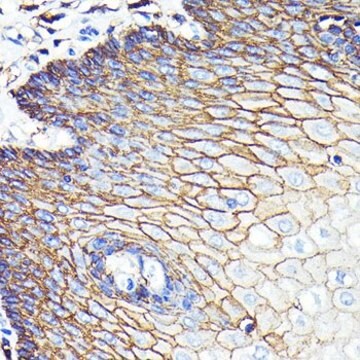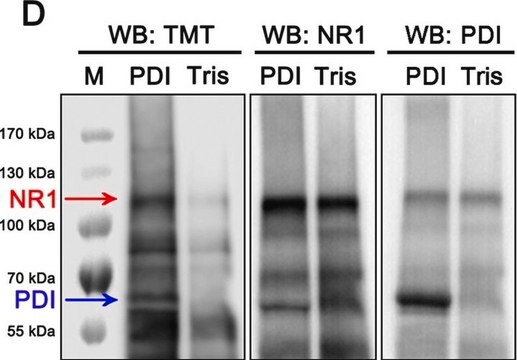MABT78
Anti-mouse CD44 (H-CAM) Antibody, clone KM201
clone KM201, from rat
Synonim(y):
CD44 antigen (homing function and Indian blood group system), CDw44 antigen, HCAM, H-CAM, HUTCH-1, Phagocytic glycoprotein I, Extracellular matrix receptor III, GP90 lymphocyte homing/adhesion receptor, Heparan sulfate proteoglycan, Hermes antigen, Hyalu
About This Item
Polecane produkty
pochodzenie biologiczne
rat
Poziom jakości
forma przeciwciała
purified antibody
rodzaj przeciwciała
primary antibodies
klon
KM201, monoclonal
reaktywność gatunkowa
mouse
metody
flow cytometry: suitable
izotyp
IgG1κ
numer dostępu NCBI
numer dostępu UniProt
Warunki transportu
wet ice
docelowa modyfikacja potranslacyjna
unmodified
informacje o genach
human ... CD44(960)
Opis ogólny
Specyficzność
Immunogen
Zastosowanie
Cell Structure
Stem Cell Research
Adhesion (CAMs)
Hematopoietic Stem Cells
Jakość
Flow Cytometry Analysis: 0.1 µg of this antibody detected CD44 in mouse bone marrow cells.
Opis wartości docelowych
Powiązanie
Postać fizyczna
Przechowywanie i stabilność
Komentarz do analizy
Mouse bone marrow cells
Inne uwagi
Oświadczenie o zrzeczeniu się odpowiedzialności
Nie możesz znaleźć właściwego produktu?
Wypróbuj nasz Narzędzie selektora produktów.
Kod klasy składowania
12 - Non Combustible Liquids
Klasa zagrożenia wodnego (WGK)
WGK 1
Temperatura zapłonu (°F)
Not applicable
Temperatura zapłonu (°C)
Not applicable
Certyfikaty analizy (CoA)
Poszukaj Certyfikaty analizy (CoA), wpisując numer partii/serii produktów. Numery serii i partii można znaleźć na etykiecie produktu po słowach „seria” lub „partia”.
Masz już ten produkt?
Dokumenty związane z niedawno zakupionymi produktami zostały zamieszczone w Bibliotece dokumentów.
Nasz zespół naukowców ma doświadczenie we wszystkich obszarach badań, w tym w naukach przyrodniczych, materiałoznawstwie, syntezie chemicznej, chromatografii, analityce i wielu innych dziedzinach.
Skontaktuj się z zespołem ds. pomocy technicznej








